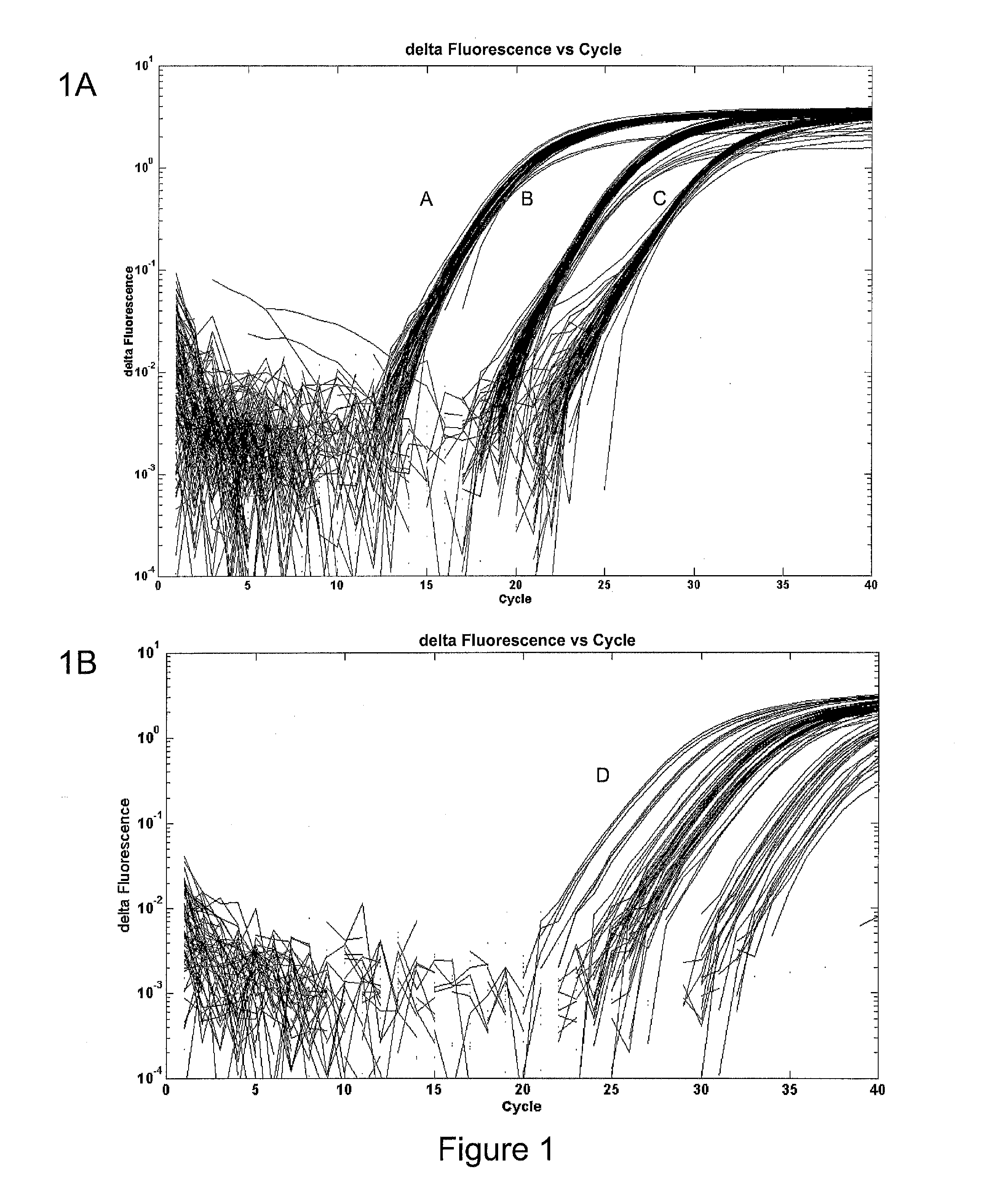Compositions And Methods For Cancer Testing
a cancer and composition technology, applied in the field of compositions and methods for cancer testing, can solve the problems of severe side effects, unreliable use of tnm at stage ii for predicting recurrence or determining response to a particular therapy, and achieve the effect of improving rna yield and quality, and controlling the variability of actual assays
- Summary
- Abstract
- Description
- Claims
- Application Information
AI Technical Summary
Benefits of technology
Problems solved by technology
Method used
Image
Examples
example 1
[0039]In the course of performing our initial validation study, we noted the substantial variability between plates. We investigated the possibility of fixing the sample concentration and normalizing to an endogenous control to correct this. We compared this method with the use of our internally designed non-human controls (FIG. 1). As shown, the endogenous control (FIG. 1B) varies far more widely than expected for inter-run variability. This is likely a result of individual expression levels and high variability in overall sample quality, which is affected by many factors. Our spike in controls performed better (FIG. 1A), showing only the expected variability between runs. Being able to control this variability is important in detecting the subtle expression differences present in the recurrent and non-recurrent disease states. Further, use of a sample-independent control is the most effective method for identifying inter-test variability.
PUM
| Property | Measurement | Unit |
|---|---|---|
| volume | aaaaa | aaaaa |
| volume | aaaaa | aaaaa |
| temperature | aaaaa | aaaaa |
Abstract
Description
Claims
Application Information
 Login to View More
Login to View More - R&D
- Intellectual Property
- Life Sciences
- Materials
- Tech Scout
- Unparalleled Data Quality
- Higher Quality Content
- 60% Fewer Hallucinations
Browse by: Latest US Patents, China's latest patents, Technical Efficacy Thesaurus, Application Domain, Technology Topic, Popular Technical Reports.
© 2025 PatSnap. All rights reserved.Legal|Privacy policy|Modern Slavery Act Transparency Statement|Sitemap|About US| Contact US: help@patsnap.com

